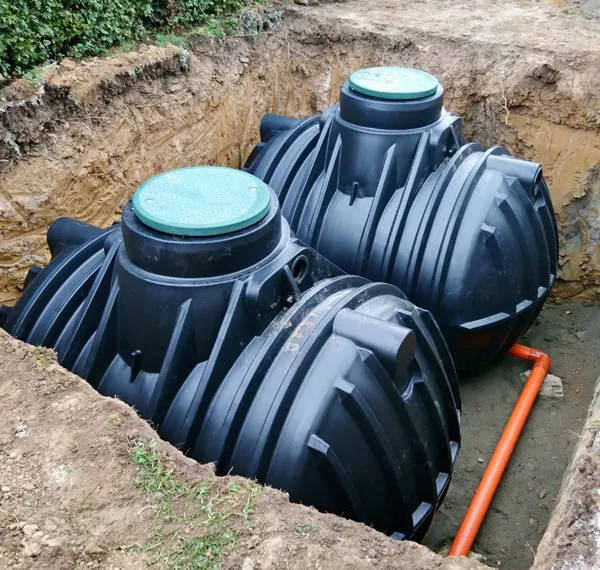When buying a home or a building facility, you have to check a lot of things.
One of the most important is establishing the wastewater management system in place.
This can either be the municipal sewer system or an on-site septic system.
For the latter category, you also want to know the number of septic systems on the property.
Speaking of the number of septic systems, one of the most common questions people tend to ask is:
Can One Property Have Two Septic Systems?
Well, one property can have more than one septic system. It is a rare case but one that’s becoming more popular as more people embrace it.
The main reason for having two septic tanks is to separate blackwater from greywater.
Blackwater consists of waste flushed down the toilet –flush water, urine, and fecal matter. Greywater is wastewater from sinks, showers, bathtubs, and washing machines.
Separating both types of wastewater helps take some pressure off the septic system.
Black water is essentially polluted with pathogens. As such, they need to be broken down before the water is released into the drain field.
When the waste has a lot of excess water, the process can be long and difficult.
Having an extra tank to break down waste makes the whole system faster and more effective in processing waste.
One system can treat one type of waste as another tackles the other. It also keeps it in a better condition thus prolonging its life.
In a property with two houses, a two-tank septic system can be incredibly beneficial.
One system can serve both homes, except each one will have a different tank.
Doing this saves on the installation and maintenance of the septic system. It also lowers the impact of the wastewater system on the environment.
For large design systems with flows of 10,000 – 15,000 gallons per day, having two septic tanks is necessary.
Some people use one rectangular septic tank that has been divided into two sections. Not only does this system ensure things are flowing smoothly but it in case one system fails, the functioning one will still process the waste.
How Does A 2-Tank Septic System Work?
Most properties have two separate septic tanks made of concrete sitting next to each other.
Each has its own lid and pipes flowing from the house. One has an inlet from the collection point of greywater and the other one has an inlet from the toilet.
The first tank is usually bigger than the second.
Sludge stays in the first tank as sewage undergoes further processing to get rid of residual matter in the second matter.
It is also possible to have one large tank that has two compartments.
For septic systems that serve two homes, septic tanks can be located farther from each other.
One system would be installed near the home it serves while another one would be located somewhere near the second home.
The principle is the same. Wastewater flows from the toilets or sinks and collects in one tank for treatment. The same happens in the second home.
When both have been adequately processed, they will flow to the drain field.
If the field is too small to accommodate the effluent, a second one will be dug away from the first.
Having two septic systems in one property is not an easy undertaking. Installation is costly and time-consuming. In certain jurisdictions, the law doesn’t allow for it.
Additionally, it requires thorough planning to execute it. Professionals have to inspect the property to see if it can handle two tanks.
Wrap Up
In most cases, one property often has one septic system only.
However, a two-septic tank system is also possible for one home.
So in essence, one property can have two septic tanks, not two different systems.
Effluent from both tanks drains in one leach field. One system simply processes a specific kind of waste while the second one handles another type.
In properties with two homes, one tank is designated for one family and the second one for another.
